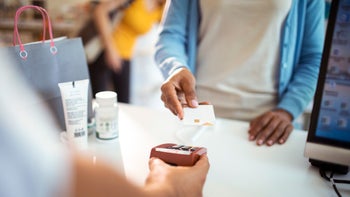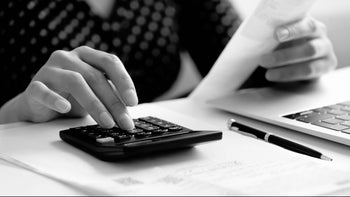
Surprising Things You Can Buy With Your Flexible Spending Account
Key takeaways:
A flexible spending account (FSA) allows you to pay for qualified medical expenses with tax-free dollars. But you must use the funds before the deadline to avoid losing them.
You may already know that you can use your FSA to pay for out-of-pocket expenses like prescription eyeglasses and eye exams. However, there are other eligible items that might surprise you, such as certain types of lip balm and sunscreen.
Thanks to the Coronavirus Aid, Relief, and Economic Security (CARES) Act, the list of FSA-eligible items has expanded to include everyday items, including over-the-counter medications like Tylenol and menstrual products.
Flexible spending accounts (FSAs) can be a great way to save on healthcare expenses, but understanding how they work is key to getting the most out of them. FSAs allow you to set aside pretax dollars to cover qualified medical expenses throughout the year. However, there’s a catch: FSA funds must be used by the end of the plan year, or you risk losing what’s left.
It’s important to know what counts as an FSA-eligible expense so you can use your funds wisely. While you may be familiar with using FSAs to cover copayments and eye exams, you might be surprised to learn about other eligible items.
What is a flexible spending account?
An FSA is an employer-sponsored health benefit. If your job offers an FSA, you can contribute pretax dollars to the account to pay for qualified health expenses during the plan year. Your FSA dollars can also be used to cover qualified expenses for your spouse and dependents.
Prescription Savings Are Just the Beginning
See what other benefits you qualify for—from cashback cards to cheaper insurance.

Here’s a breakdown of how an FSA works:
Electing a contribution amount: You decide how much you want to contribute to your FSA (up to the annual limit) for the plan year. Your employer then deducts money from each paycheck, though the full contribution amount is available for use at the start of the plan year.
Paying for qualified expenses: You can use your FSA funds to cover expenses that are medically necessary tax-free. That means the expenses must be for the prevention, diagnosis, treatment, cure, or mitigation of a health condition. Expenses related to your general health purposes typically don’t qualify.
Submitting reimbursement requests: If your FSA provider gives you a debit card, you can pay for eligible expenses with your card. If not, you’ll have to submit your receipts in order to receive reimbursement.
Since this account comes with built-in tax benefits, limitations do apply. For 2024, the contribution limit for health FSAs is capped at $3,200 per person. This cap will increase to $3,300 in 2025.
Examples of items that traditionally have been FSA eligible
You’re probably aware that you can use FSA dollars to pay for deductibles, copays, and prescription medications. But there may be some popular FSA-eligible items that surprise you.
As mentioned, products and services must be for the diagnosis, treatment, mitigation, or cure of a medical condition to count as FSA eligible. They usually cannot be solely for the purpose of promoting general health. But there are many products and services that meet that criteria, including:
Baby monitors
Baby thermometers
Bandages
Blood glucose test strips
Blood pressure monitors
Breast pumps
Condoms
Contact lens cases
Contact lens solution
Dentures
Fertility treatments
Foot care items
Heart rate monitors
Heating pads
Lip balm (typically SPF 15 or higher)
Pregnancy tests
Prescription contact lenses
Reading glasses
Shoe inserts
Sunscreen with SPF 15 or higher
Travel pillows
How does a flexible spending account (FSA) work? From contribution limits to spending deadlines, here are a few items to consider if you enroll in an FSA.
Can you buy lip balm with an FSA? Yes, if your lip balm meets these requirements.
Health savings accounts (HSAs) vs. FSAs: While HSAs and FSAs both allow you to pay for qualified expenses, there are a few differences you should consider.
What are some items that were newly covered by FSAs in 2021?
Your hard-earned FSA dollars can stretch further thanks to the Coronavirus Aid, Relief, and Economic Security (CARES) Act, which was signed into law on March 27, 2020.
This piece of legislation expanded the list of FSA-eligible medical expenses and removed the prescription requirement for several medications. Here are a few more items that you can add to your FSA shopping list thanks to the CARES Act:
Monthly period supplies, including cups, tampons, liners, period underwear, and pads
Personal protective equipment, including hand sanitizer, masks, and sanitizing wipes
Many over-the-counter medications, including pain relievers like acetaminophen (Tylenol) and certain allergy and cold relief products
Read more like this
Explore these related articles, suggested for readers like you.
What happens if I spend my FSA funds incorrectly on ineligible items?
Keep in mind that not all healthcare costs are not treated equally under FSA tax rules. For example, daily care products, like Vaseline, toothpaste, and deodorant, are not FSA-eligible expenses. Gym memberships and health insurance premiums aren’t eligible either.
It’s possible that you may accidentally purchase a nonqualifying expense with your FSA funds. If you do, don’t panic. The IRS won’t penalize you, but your plan sponsor may ask you to replace the funds.
If you get a letter of medical necessity from your healthcare professional, you may get around the standard list of FSA-eligible expenses. If the eligibility of an item is fuzzy, your employer may require additional information from your healthcare professional and more details regarding the use of the desired product or service.
Do FSA funds roll over annually?
If your employer allows it, you may be able to carry over up to $640 of unused funds from 2024 into 2025. Starting in 2025, the maximum carryover amount will increase to $660. Check with your employer to find out about your plan’s structure and rollover benefits.
What can I do with leftover FSA money?
As it gets closer to the end of the year, it’s the perfect time to take inventory of your upcoming expenses and figure out how to use your remaining FSA funds. You can stock up on health and wellness products, fill your medicine cabinet, or prepare for your next vacation with your favorite brand-name sunglasses.
Find out when your FSA deadline is, and then don’t let your FSA dollars go to waste. Any unused funds will go to your employer. So keep an eye out for ways to use your FSA funds throughout the year, as well.
The bottom line
Before you reach into your pocket to pay for routine healthcare expenses, check to see if you can use your flexible spending account (FSA) funds to pay for them tax-fee. Sometimes, you can use FSA to cover items beyond the traditional list of medical expenses. But there are some popular FSA-eligible items that may surprise you.
FSAs provide a unique opportunity to cover some of your out-of-pocket costs tax-free. So be sure to check with your employer or FSA administrator to make sure you're maximizing your benefits this year.
Why trust our experts?

References
Internal Revenue Service. (2024). IRS releases tax inflation adjustments for tax year 2025.
Internal Revenue Service. (2024). Publication 969: Health savings accounts and other tax-favored health plans.
This article is solely for informational purposes. This article is not professional advice concerning insurance, financial, accounting, tax, or legal matters. All content herein is provided “as is” without any representations or warranties, express or implied. Always consult an appropriate professional when you have specific questions about any insurance, financial, or legal matter.




























